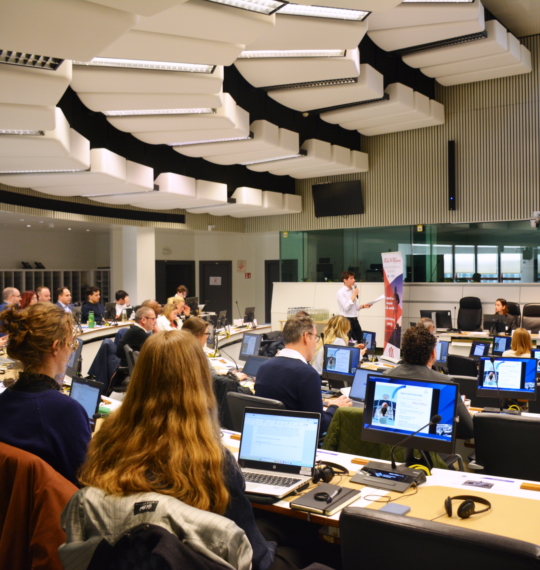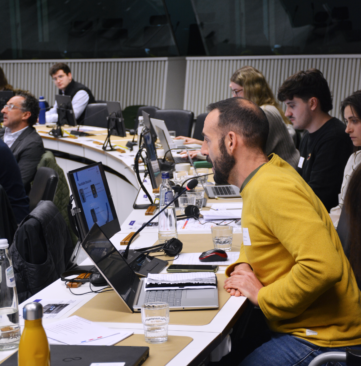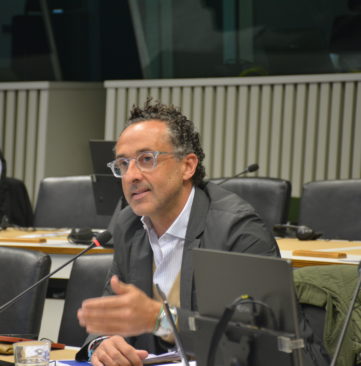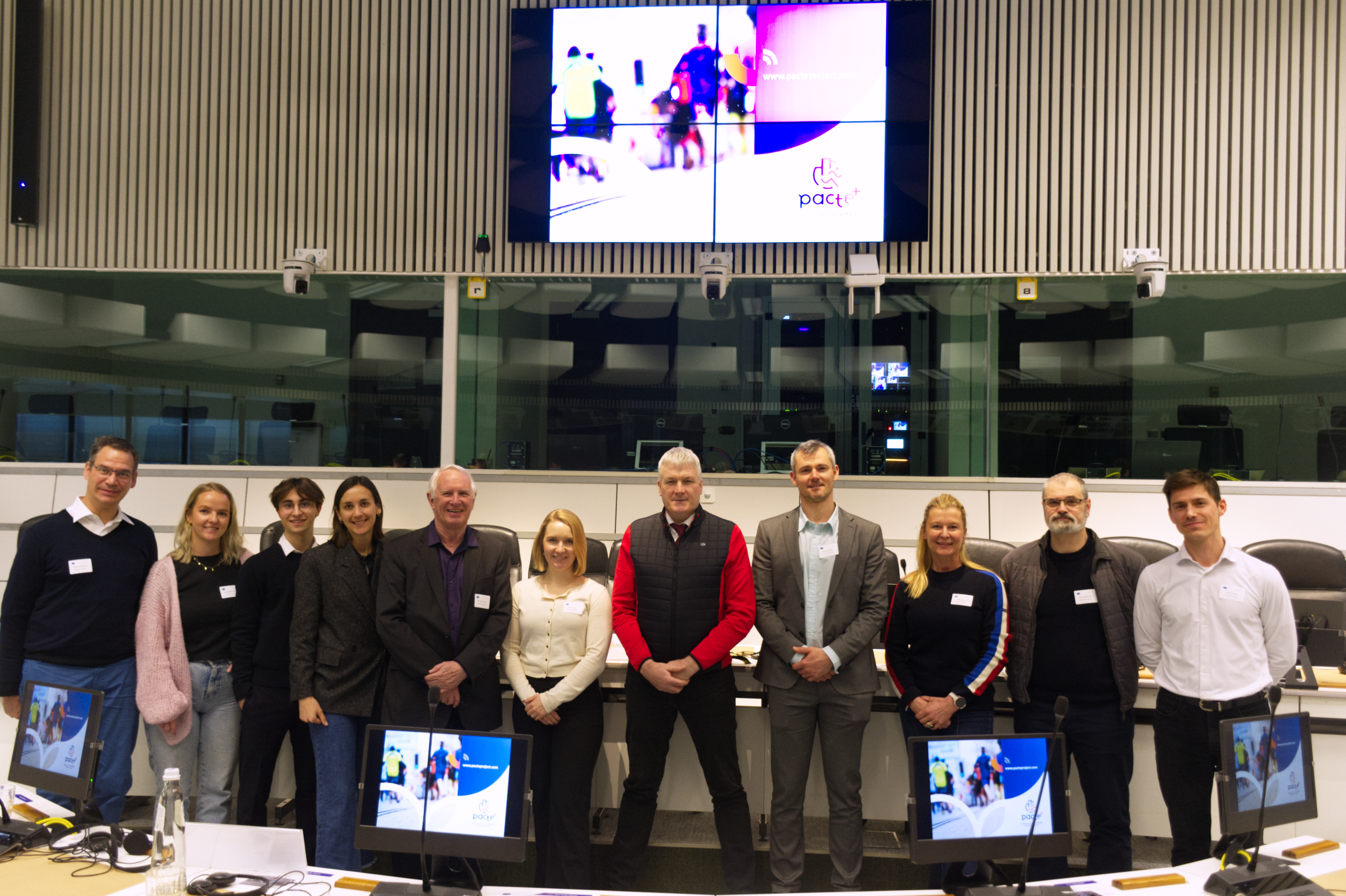Objectives and progress of the day
The objectives of the event were to share the tools developed as part of the project, in particular the “Matrix for Change”, to exchange innovative practices, to strengthen the European network of active cities and to promote political commitment to physical activity.
The day was punctuated by presentations, thematic workshops and a round table. Participants were able to discover the objectives and vision of the PACTE+ project, presented by Hugo Tosello (Sport and Citizenship) and Rachel MAIT (TAFISA). Alister Dalrymple (EVALEO) illustrated these points with examples of pioneering cities and the results obtained. The cities of Graz, Limerick, Angers and Frederikstad also shared their testimonials, mentioning both successes and obstacles encountered.
The “Matrix for Change” at the heart of discussions
One of the highlights of the day was the presentation of the “Matrix for Change” by Alister Dalrymple (EVALEO) and Rachel MAIT (TAFISA). This strategic tool, designed to help cities implement active city policies, was tested by participants in interactive workshops.
The participants’ initial impressions of the matrix are generally positive. The theoretical foundations for creating active cities are considered particularly effective. According to the workshop participants, the tool appears to be comprehensive, thanks to insights from pilot cities and its “checklist” approach, which provides a broad overview of key challenges and available resources, enabling the development of long-term, multisectoral strategies.
This exchange day was particularly valuable in gathering feedback for improving the matrix, allowing us to refine it as soon as possible. Among the suggested enhancements, a more detailed description of target population categories, access to a database compiling best practices from other cities, a platform connecting experimental cities to encourage partnerships, and a tiered approach to implementing activity strategies within cities could be relevant for the future of active cities.
A strengthened European network
The day helped strengthen the European network of cities committed to promoting physical activity. Participants highlighted the importance of these exchanges to share good practices, identify common challenges and build innovative solutions.
Renewed political commitment
The round table brought together representatives from Eurocities, Cathy Verschoore (City of Ghent) and Duarte Oliveira (Municipality of Funchal). Discussions focused on the importance of political commitment to making physical activity a priority in local public policies. An ‘active city’ is a municipality that prioritizes and facilitates physical activity for all its residents through infrastructure, programs, and policies. This concept is crucial because it directly impacts public health, social cohesion, and overall quality of life. By creating environments that encourage movement, cities can combat sedentary lifestyles, reduce chronic diseases, and foster a sense of community. The panelists emphasized that political leadership is essential to drive these initiatives, ensuring that active living becomes an integral part of urban planning and development. Moreover, fostering intersectoral cooperation is vital. Cities should establish committees or collaborative projects that are open to all stakeholders wishing to contribute. This inclusive approach ensures that diverse perspectives are integrated, leading to more effective and sustainable active city initiatives. The success of such initiatives often hinges on the ability to break down silos between different sectors, such as health, urban planning, education, and sports. For instance, the city of Ghent highlighted the importance of multidisciplinary approaches, involving youth services, landscaping, and prevention services to improve accessibility to sports and physical activities. By working together, cities can create synergies and maximize the impact of their policies, ensuring that active living becomes a reality for all citizens.Conclusion
The March 3, 2025 event was an important step for the PACTE+ project. It helped showcase the tools developed, strengthen the European network of active cities and promote political commitment to physical activity. Participants left with new ideas and renewed energy to make their cities more favorable environments for the health and well-being of all.








